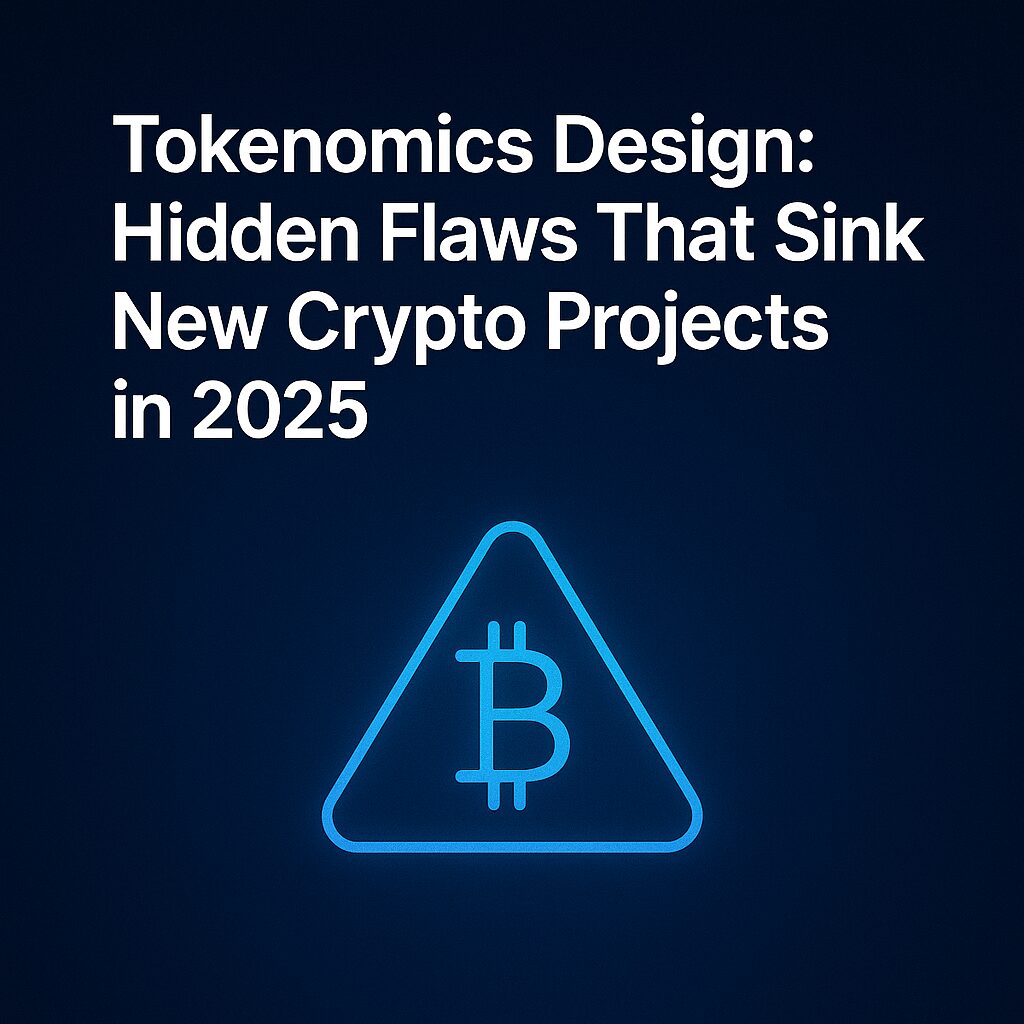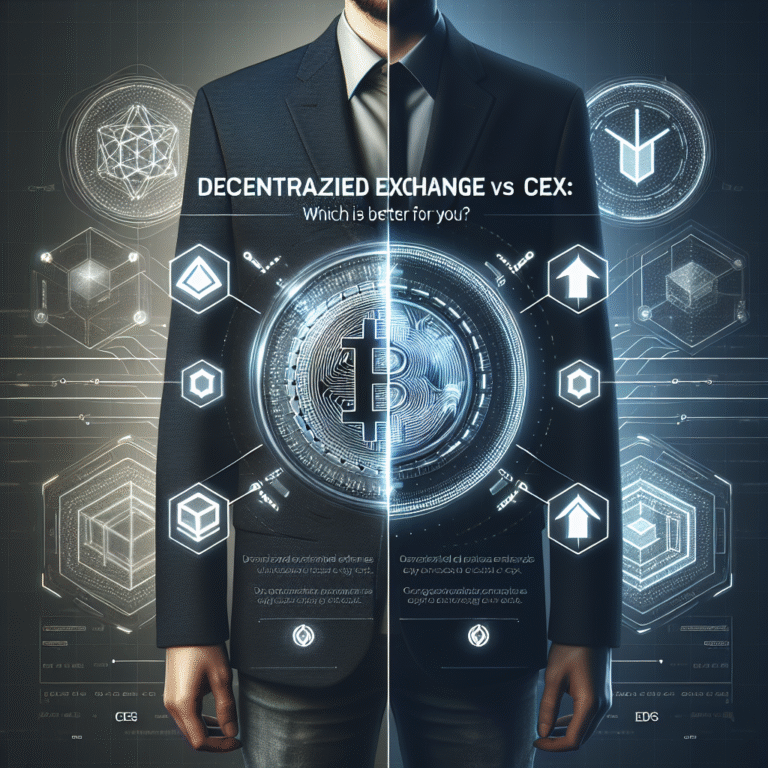Blockchain technology shows great promise, yet almost 90% of tokens end up trading below their original listing price within months of launch. A successful crypto project in 2025 and beyond needs solid tokenomics design as its foundation.

Projects with innovative blockchain products can still join the “90% club” of failures without a carefully planned economic model. Our analysis of numerous tokenomics examples reveals that most crypto projects disappoint their early investors. The disappointment stems from projects that ignore basic tokenomics principles or create models with wrong incentives. Some platforms saw 90% of their activity come from wash trading as traders exploited rewards systems.
This piece dives deep into common flaws that doom promising crypto projects. We’ll explain what makes tokenomics succeed or fail by examining everything from mismatched incentives to complex supply mechanisms. You’ll learn about sustainable tokenomics models through useful insights. A well-laid-out token economy helps promote network security and positive user behavior while ensuring the project lasts. Bad tokenomics design can doom a project and break investor trust.
Flawed Token Utility That Fails to Drive Demand
“Flawed tokenomic structures are undermining the sustainability of even technically robust crypto projects.” — Arthur Iinuma, Crypto token design expert, author of industry reports on tokenomics failures
Real utility creates the foundation of successful tokenomics design. Most crypto projects fail because they don’t understand what makes tokens valuable. Token utility serves as the core engine that creates sustainable demand, not just an afterthought.
Lack of real use cases in token ecosystems
BitConnect teaches us an important lesson in tokenomics history. Their model didn’t create real value but focused on creating speculative excitement. The project got massive investments through promises of high returns. There was no real economic activity to back up or keep these rewards going. This focus on speculation shows a basic flaw in tokenomics design.
Tokens need clear, defined use cases that fix specific problems or meet real needs to succeed. Tokens that don’t have this foundation don’t get adopted and lose value quickly. Experts say projects should:
- Find specific problems the token wants to fix
- Make sure it fits with the project’s vision
- Explain use cases clearly in all documents
- Think over multiple complementary use cases
- Keep updating use cases based on what users say
Terra’s collapse gives us another lesson in tokenomics. UST, the algorithmic stablecoin, didn’t have enough independent backing. This created a weak point that ended up causing a “death spiral”. LUNA’s falling values made UST worth less, which led to more LUNA being created. Both tokens ended up collapsing.
Forced token adoption without added value
Worldcoin made a big mistake by pushing its crypto token too hard for adoption. This plan—copied from what people thought made Bitcoin successful—misses the point about utility and adoption. Since then, thousands of “copy-paste tokens” tried the same thing. Most of these tokens are now in what you might call the “crypto-zombie graveyard”.
Crypto projects must follow basic economic rules. Successful projects focus on real utility first. They use tokens as a strategic tool to speed up adoption or fix specific market problems in their ecosystem.
Play-to-earn games show us another clear example. Axie Infinity’s Smooth Love Potion (SLP) token had a basic problem. Players earned tokens through gameplay much faster than they could use them for breeding and other things. This led to too many tokens being created, which made SLP’s price crash and player earnings drop.
The system needed new players coming in all the time to work—this wasn’t a good economic design. This tokenomics failure shows how hard it is to balance player rewards with token stability when there aren’t proper ways to remove tokens from circulation or create external value.
Overlapping utility across multiple tokens
Projects often create multiple tokens that do the same things. Many cryptocurrencies use one token for everything:
- Network access
- Investment trading
- Making payments
These use cases often clash with each other. Price changes from trading make the token less useful for payments or utility. High fees cause problems, but unpredictable fee structures make things worse. Users who expect to pay $0.50 might face costs between $1.00 and $100.00. This makes them look for better ways to pay.
Crypto communities have built good features in their systems, but they stay isolated in individual projects. Network effects matter a lot in this industry. This separation means almost no cryptocurrency gets big enough to replace regular money.
Legal and accounting issues come up when tokens don’t match their marketing claims. Airlines count loyalty miles as things they owe (which makes sense as promises for future services). Crypto projects often treat similar promises as assets. This creates backward incentives that care more about token price than building lasting businesses.
Good tokenomics design must focus on creating real value instead of speculation or forced adoption to fix these utility problems. This approach helps crypto projects build lasting ecosystems with tokens that serve real purposes.
Misaligned Incentives That Undermine Ecosystem Health
Good tokenomics depends on how well a project lines up participant rewards with its long-term success. Token ecosystems often fail when these rewards clash – no matter how innovative the technology might be.
Short-term rewards vs long-term value creation
The biggest problem in crypto projects comes from mismatched timelines. Web2 businesses tie financial rewards to their long-term success. Web3 projects let people cash out early, even before they prove their worth. This quick access to profits creates a gap between quick gains and steady growth.
Terra/LUNA’s collapse in May 2022 shows this mismatch perfectly. The project’s unsustainable 20% APY on UST created artificial demand that crashed once they couldn’t keep paying high yields. Their algorithmic peg worked fine during growth but broke down under pressure. This triggered a death spiral when market stress showed up.
Finding the sweet spot between quick wins and long-term goals remains one of the hardest parts of creating good tokenomics. Fixed token supplies and time-based unlocks push founders and early investors to cash out early instead of building something lasting. Many projects now test performance-based vesting that ties token unlocks to real achievements.
Airdrops and pump-and-dump risks
Airdrops look good at first – they reward users who get involved and spread tokens around. In spite of that, they often lead to bad incentives. Chainalysis reports that pump-and-dump scams made up over 50% of token launches in 2023. These scams keep threatening the health of the ecosystem.
A typical pump-and-dump has four phases:
- Pre-launch: They build hype around a worthless token through allowlists and pre-sales
- Launch: They hire promoters to attract more victims
- Pump: Prices shoot up as more people jump in
- Dump: The masterminds sell everything, and supply crushes demand
The Squid Game Token shows this pattern clearly. It shot up by over 14,300,000% in a week before developers pulled the rug. The price crashed to almost zero, and investors lost millions. These schemes hurt individual investors the most and damage crypto’s reputation.
Red flags include sudden price spikes in rarely-traded cryptocurrencies, too much hype in chat groups, pressure to buy now, promises of guaranteed returns, and team members who stay anonymous.
Examples of aligned vs misaligned incentives
Uniswap shows how well-aligned incentives work in real life. Their tokenomics model has:
- 60% of tokens going to community members
- 15% airdropped to past users
- Four-year vesting period for team and investor tokens
- Minimum 1% holding needed for governance proposals
Their Automated Market Maker gives liquidity providers 0.3% transaction fees. This ties rewards to the protocol’s success. Success shows up in low token movement among governance participants, stable liquidity, steady governance activity, and self-sustaining revenue.
Projects with mismatched incentives usually benefit founders, venture capitalists, centralized exchanges, market makers, and influencers instead of retail investors and long-term participants. This imbalance stops sustainable innovation. Projects that give too much power to large token holders create more problems. They make wealth gaps bigger, kill competition, and discourage wider participation.
Better tokenomics models should create incentives that work even without constant growth. Safety features like circuit breakers help prevent total failure during market stress. A project’s reserves must be reliable enough to handle market shocks. Terra learned this lesson the hard way when its bitcoin reserves failed to protect its peg during crisis.
Overengineering Supply Without Demand Drivers
“The rate of SLP generation through gameplay far outpaced its consumption through breeding and other sinks.” — Bitbond Editorial Team, Industry research team specializing in blockchain and tokenomics
Crypto projects build complex mathematical models for token supply but crash soon after launch. This pattern emphasizes a big problem in tokenomics design – teams spend too much time engineering token supply and not enough time thinking about what makes people want tokens.
Teams obsess over charts and schedules instead of value
Project teams get caught up in token release schedules, vesting structures, and supply metrics. They forget about what gives their token actual worth. Data shows that token unlocks releasing more than 1% of circulating supply shake up prices. Yet teams stay focused on these mechanics and ignore the token’s basic usefulness.
The biggest mistake in tokenomics design comes from copying vesting structures from other projects. Teams don’t study how these structures affect price, behavior, or supply dynamics. This copy-paste mindset leads to predictable crashes.
Linear vesting looks simple but hurts long-term value. One analysis points out that linear vesting “rewards time, not progress. It pays out whatever the traction. It turns token releases into background noise until the price breaks”. This creates constant selling pressure without any connection to how useful the product is.
Projects using linear vesting show wild price swings because tokens get released whether the product improves or not. Projects that tie releases to development goals show steadier trading patterns.
Teams overlook what users want and how they behave
A simple truth lies beneath most failed tokenomics models. Teams design supply first and think about demand later—if at all. One analysis puts it simply: “only the demand side creates value”. No supply setup can save a token from dying if nobody wants it.
Successful projects put user benefits first. They build effective incentives and ways to capture value. Projects that talk openly about unlock schedules build trust and reduce panic selling. Research shows projects with clear allocation strategies get 35% more trust from their community.
Recent analysis reveals a surprising pattern. Top projects launch with more tokens available. High-performing projects start with 15.18% of tokens in circulation—triple the usual 4.98%. This helps avoid early price distortions and protects against sudden drops.
Demand matters more than supply
KPI-based vesting works better than any other approach. Unlike time-based models, it connects token unlocks to actual achievements—more users, network activity, or revenue. Supply grows with demand, not against it.
Fresh data from 2025 tells us:
- Projects with 70% or more tokens already vested keep higher prices
- Markets find their balance about 14 days after unlocks
- Gradual unlocks work better than big releases for stability
Smart projects test their tokenomics models thoroughly. Those who skip proper testing tools or ignore extreme market scenarios often crash under pressure. Projects should run simulations to see how their model handles ground conditions, testing unlock speeds, incentives, and market capacity.
Good supply mechanisms matter, but projects need to understand a basic truth. Without natural demand drivers—actual utility, network effects, or revenue—no vesting schedule can create lasting value. Even the smartest supply curve means nothing if nobody wants the token.
Toxic Behavior Loopholes in Token Models
Many tokenomics designs have hidden vulnerabilities that let bad actors take advantage of regular users. These design flaws can quickly destroy even well-built projects when toxic behavior goes unchecked.
Wash trading and reward manipulation
Wash trading happens when traders buy and sell the same cryptocurrency back and forth to trick other market participants. This deception makes it look like there’s more trading activity than there really is. Research shows wash trading makes up about 70% of all trades on unregulated exchanges. This shows just how common this manipulation has become.
NFT platforms face even bigger problems. Data reveals wash trading made up USD 18 billion, or 95% of all trading on a major NFT marketplace. Traders use several tricks to pull off wash trades:
- Multiple accounts to coordinate buying and selling
- Trading bots that quickly match their own transactions
- Working with other traders to fake market activity
Traders usually do this to make assets look more popular and draw in real investors. Some exchanges actually help this happen to rank higher on tracking websites since higher volumes bring more users and fees.
Pump-and-dump schemes by insiders
Pump-and-dump schemes are another toxic pattern that plagues crypto markets. Insiders work together to drive up token prices so they can sell at the top, leaving regular investors with worthless tokens. Chainalysis found that pump-and-dump scams made up over half of all token launches in 2023. This shows these problems are systemic.
These schemes follow a clear pattern. The creators quietly buy tokens at low prices. They create buzz on social media and chat groups. Once prices shoot up from buying pressure, they dump their tokens at high prices and crash the market.
The FBI’s Operation Token Mirrors case shows this perfectly. They found organizers who pushed up a cryptocurrency’s price with fake orders and bots. The group then aggressively promoted it on social media to pressure people into buying quickly. The organizers sold everything once prices peaked, which crashed the market and cost investors huge losses.
New projects face risks from predatory tokenomics design. One analyst points out that “Tokenomics models are almost exclusively designed to benefit the team and early investors, and by the time the token is available for retail investors to buy, you will often be acting as exit liquidity”. The huge gaps between initial and fully diluted valuations in many projects signal that insiders plan to sell massive amounts later.
Designing for edge cases and malicious actors
Building good tokenomics means thinking like an attacker. a16z crypto suggests that “Designing a token should be approached like designing an adversarial system. Assume Byzantine behavior”. Teams need to prepare for the worst scenarios and most toxic users.
Designers often make mistakes when they fix one security hole without checking the whole system again. Fixing one edge case can create collateral damage elsewhere. Teams must check that everything still works as planned whenever they change the token model.
Projects should build protection against:
- Reward gaming that drives honest users away
- Price manipulation followed by market crashes
- Smart players exploiting incentive systems
The rules for malicious-resistant tokenomics include planning for worst-case scenarios, fixing problems early, and creating governance that discourages bad behavior while rewarding positive contributions. This encourages healthier ecosystems, builds trust, and helps projects last longer.
Some blockchain communities suggest self-regulation through trusted validator groups who watch over token creation. These validators wouldn’t control everything but would work as decentralized actors who enforce basic standards and make token creators more accountable.
Unclear Token Goals and Category Mismatches
A significant mistake in tokenomics design comes from basic confusion about token categories. Many teams launch tokens without knowing which type works best for their needs. This lack of understanding leads to mismatched features and eventual project failure.
Confusing stablecoins with value accrual tokens
Teams often mix different token categories and create hybrid tokens that fail at multiple functions. Stablecoins need stable value and reliable transactions. Some projects try to mix these features with speculative value growth, which contradicts the basic design. These tokens end up neither staying stable nor capturing value effectively.
Using volatile tokens for in-game economies
Web3 game developers don’t deal very well with single-game token sustainability. Game popularity naturally declines over time, which reduces community interest in related tokens. This usually leads to massive value drops. Take Axie Infinity’s token – it once valued at USD 160.00 but crashed to single digits when player excitement faded.
Token prices and P2E player growth show a strong connection (0.76). This creates a cycle where tokens need new players to keep their value. Monthly active users dropped 74% after continuous price drops in some games. Such price swings hurt in-game economies that need stable, predictable value to work properly.
How to align token type with project goals
Projects must match their token models with specific goals to work. Some developers now create detailed platform tokens that support products in one ecosystem. These multi-purpose tokens work better than single-game ones. They support entire networks of games and player interactions, which provides steady utility across many applications.
The answer lies in keeping things simple rather than complex. Each token should serve one main purpose:
- Utility tokens: Focus on access and usage rights
- Governance tokens: Emphasize decision-making power
- Security tokens: Represent ownership or revenue rights
- Stablecoins: Prioritize value stability
Clear categories and goals help tokenomics design avoid the confusion that ruins promising projects.
Lack of Simulation and Testing Before Launch
Projects often fail because teams skip proper simulation before launch. Many founders learn about fatal flaws only after putting their money and reputation on the line.
Skipping cadCAD or similar modeling tools
CadCAD helps projects design, test, and confirm complex token systems through Monte Carlo methods, A/B testing, and parameter sweeping. Teams can visualize thousands of possible futures with this simulation framework to find weaknesses before deployment. TokenSPICE provides another option that we used for later-stage analysis. It models smart contract behavior directly instead of mathematical equations. Many projects still launch without proper modeling and end up facing failures they could have predicted.
Failure to test for extreme market conditions
Token stress testing must account for extreme scenarios such as:
- Sharp price movements (sudden drops or surges)
- Liquidity crises (major provider withdrawals)
- User behavior shifts (mass exits)
These tests challenge token economies to their limits and show how systems handle pressure. Teams must understand how market shocks affect token flows that could disrupt liquidity and threaten the ecosystem’s health.
Importance of stress-testing tokenomics
Teams can find “leaky buckets” that drain token value through stress testing before they become ground problems. Running simulations with hundreds of thousands of possible futures shows how tokenomics handles extreme conditions. Teams should test both external events (market cycles, economic shocks) and internal decisions (token issuance, reward structures). Simulation helps calculate risks for different setups, which leads to evidence-based decisions rather than guesswork.
Conclusion
The life-blood of successful crypto projects lies in tokenomics design, but our analysis reveals systemic problems that sink promising ventures. Most projects obsess over supply mechanics and ignore what drives demand—the true source of lasting value. This explains why almost 90% of tokens fall below their original listing price within months of market launch.
Projects should focus on genuine utility instead of forced adoption. Tokens become pure speculation vehicles headed for collapse without real-life use cases. BitConnect and Terra serve as warnings of how speculation-first strategies led to disaster.
Wrong incentives hurt long-term success. The clash between quick profits and lasting growth creates projects built for fast exits rather than enduring value. Many founders and early investors cash out before finding product-market fit, leaving retail investors stuck with assets that lose value faster.
Supply curves and vesting schedules might look great on paper but mean nothing without proper demand drivers. KPI-based vesting linked to measurable achievements works better than time-based models by a lot. This ensures supply grows with actual adoption instead of following random schedules.
Poorly designed token systems have dangerous loopholes. Wash trading and pump-and-dump schemes thrive and hurt innocent participants while making manipulators rich. Projects should design tokenomics expecting the worst behaviors—preparing for attacks from all angles.
Wrong category choices lead to project failures too. Games that use volatile tokens for in-game economies lose players when prices drop. Projects that try to mix stablecoin features with value growth create systems that fail at both goals.
Detailed simulation testing before launch matters but projects often skip it. Testing against extreme market conditions helps find system weaknesses before real money gets involved. Projects that skip this step only find fatal flaws after causing major financial damage.
Success requires a fundamental change—building tokenomics for the long run instead of quick gains. Start with clear utility goals, smart incentives that line up, reliable demand drivers, and full testing. These steps help crypto projects avoid hidden flaws that sink ventures despite great technology.
Key Takeaways
Understanding these critical tokenomics flaws can help you identify sustainable crypto projects and avoid the 90% that fail within months of launch.
• Focus on genuine utility over speculation – Successful tokens solve real problems with clear use cases, not forced adoption schemes that prioritize hype over value creation.
• Align incentives for long-term success – Projects with performance-based vesting and sustainable reward structures outperform those optimized for quick founder exits.
• Design demand drivers, not just supply mechanics – Elaborate vesting schedules mean nothing without organic demand; focus on what makes people actually want your token.
• Build defenses against toxic behaviors – Assume malicious actors will exploit your system; design with Byzantine assumptions to prevent wash trading and manipulation schemes.
• Match token type to project goals – Don’t create hybrid tokens that fail at multiple functions; stablecoins need stability, utility tokens need clear access rights.
• Test extensively before launch – Use simulation tools like cadCAD to stress-test your tokenomics under extreme conditions and identify fatal flaws early.
The crypto graveyard is filled with technically sound projects that ignored these fundamentals. Smart tokenomics design prioritizes sustainability over speculation, creating systems that reward genuine value creation rather than short-term price manipulation.
FAQs
Q1. What are the key elements of successful tokenomics design? Successful tokenomics design focuses on creating genuine utility, aligning incentives for long-term success, developing strong demand drivers, and implementing robust defenses against toxic behaviors. It also involves matching the token type to project goals and conducting thorough testing before launch.
Q2. How can projects avoid the common pitfall of overengineering token supply? Projects should prioritize demand-side design over complex supply mechanics. This involves focusing on creating real utility and value for users, rather than obsessing over vesting schedules and token release charts. Implementing KPI-based vesting tied to measurable achievements can help ensure supply scales with actual adoption.
Q3. What are some red flags in tokenomics that investors should watch out for? Investors should be wary of projects with unclear token utility, misaligned incentives favoring short-term gains, excessive focus on speculative mechanics, and lack of transparent allocation strategies. Other red flags include the use of volatile tokens for in-game economies and attempts to combine conflicting token functions.
Q4. Why is simulation and stress-testing important in tokenomics design? Simulation and stress-testing help identify potential vulnerabilities and flaws in tokenomics before real money is at stake. By using tools like cadCAD to model various scenarios, including extreme market conditions, projects can uncover and address issues that might lead to failure after launch.
Q5. How can projects design tokenomics to prevent manipulation and toxic behaviors? Projects should design tokenomics with Byzantine assumptions, expecting and preparing for adversarial behaviors. This includes implementing safeguards against reward manipulation, artificial price inflation, and exploitation of incentive mechanics. Additionally, projects can consider self-regulation mechanisms and governance structures that discourage toxic behaviors while promoting positive contributions.



